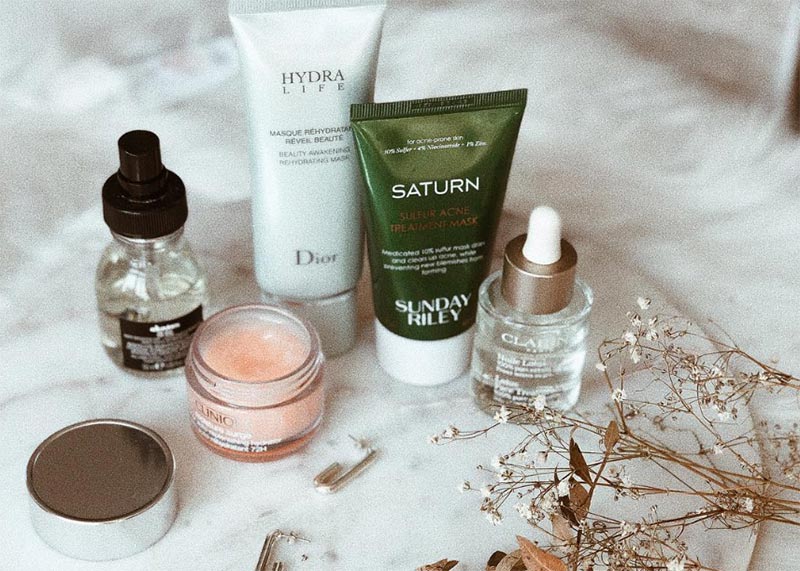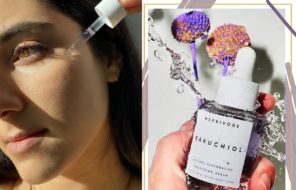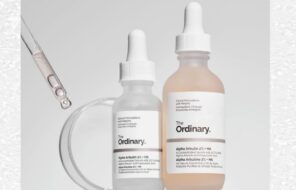Sulfur is rarely the first thing I would recommend for acne, and perhaps that is unfair. After all, sulfur has been around for centuries and was particularly favored by the ancient Romans who bathed in it.
Recently, I had the pleasure of soaking in a sulfur bath in Tbilisi, the capital of Georgia, and I can attest to the fact that my skin felt lovely afterwards, and I haven’t experienced any new breakouts since – unfortunately, a single soak is not enough for skin miracles.
Now, don’t let the rotten egg scent scare you away! Sulfur, which can also be spelled sulphur and was referred to as brimstone in the Bible, is certainly worth a try, especially if you haven’t had much luck with other acne treatments, or if you think your acne might be fungal.
Read on to really learn what sulfur is and how it works on the skin. I list all of the sulfur uses and benefits, as well as the few potential side effects from it. I’ll break down how to use sulfur most effectively in your skincare routine, so you can get the most out of sulfur to kiss your acne goodbye!
In this article:
- What Is Sulfur?
- Sulfur Benefits for Skin
- Are There Any Side Effects to Using Sulfur in Skin Care?
- How to Use Sulfur in Skin Care to Treat Acne
What Is Sulfur and How Does It Work?
It is shocking that we don’t talk about sulfur more frequently, considering it is the fifth most common chemical element on planet Earth. Elemental sulfur is more frequently found near hot springs and volcanic regions. It is an essential element for life, and it occurs naturally in all flora and fauna, though usually as organosulfur compounds rather than in its pure elemental form. Both biotin and thiamine (vitamins B1 and B7) are organosulfur compounds, for example.
In skin care, however, we want to focus on elemental sulfur, which is usually produced as a byproduct of the petroleum and gas purification process. Elemental sulfur is a great acne treatment, especially for those who suffer from fungal acne. It also has other important uses, including as a fertilizer, insecticide, fungicide, and for the preparation of matches.
When elemental sulfur is applied topically to the skin, it acts as a mild antibacterial agent to kill P. acnes, the acne-causing bacteria, and as a kertaolytic agent to promote the exfoliation of dead skin cells that might be clogging the pores. It also acts as fungicide, meaning that it kills fungus.
This is especially important for those who have Malassezia (pityrosporum) folliculitis, which is colloquially referred to as “fungal acne” even though it technically has nothing to do with the acne bacteria. It is difficult to tell the difference between real acne and Malassezia folliculitis, but if your breakouts have not responded to traditional anti-bacterial treatments but they do respond to sulfur, it is possible that yeast was the real issue.
Sulfur Benefits for Skin
- Much like glycolic and salicylic acids, sulfur is a keratolytic agent, which means that it promotes the shedding of dead skin cells, thereby exfoliating the skin. One of the causes of acne is the build-up of dead skin cells in the pores, but sulfur helps to dislodge these dead skin cells and therefore clear up the breakouts.
- The keratolyic effect of sulfur also makes it an acne preventative, since in the long term it’ll prevent the dead skin cell build-up that leads to acne.
- As sulfur oxidizes on the skin, it becomes sulfurous acid, which is a mild antibacterial agent capable of reducing the acne bacteria and therefore of preventing acne infections.
- Lastly, sulfur is one of the best treatments for fungal acne because it is a very effective fungicide, which is able to kill the yeast responsible for acne-like lesions that many people experience.
- Sulfur’s fungicidal properties mean that it can also treat other skin conditions caused by yeast, like dandruff and sebohrreic dermatitis.
- Sulfur is considered quite gentle, so it can be an excellent acne remedy for those who find that salicylic acid or benzoyl peroxide irritate their skin.
- While it is not conclusively proven, some people do mention that sulfur is anti-inflammatory, and that it helps reduce the redness and irritation from breakouts. Whether it does or doesn’t, it certainly won’t hurt to try.
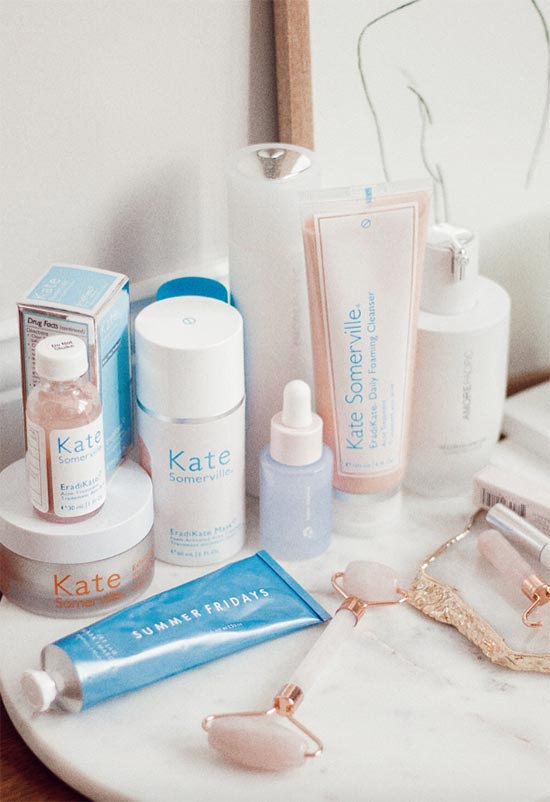
Are There Any Side Effects to Using Sulfur in Skin Care?
For some people, skincare products with sulfur may cause dryness, itchiness, swelling, or irritation. This is especially likely if you do not moisturize your skin after using a sulfur mask or before using a sulfur for acne spot treatment.
If you experience itchiness or irritation even after using some sort of moisturizing product, then you should probably discontinue your use of sulfur-based skincare products, and turn your attention to other acne treatments instead.
Sulfur has a fairly high pH, so in some instances it can actually make acne worse. However, high pH is also an issue with benzoyl peroxide, another popular and effective acne treatment. The only way to find out how your skin responds is to give sulfur a try, and to mitigate its high pH by prefacing it or following it up with pH-adjusting toner.
As with any keratolyic agent you also run the risk of over-exfoliating your skin when using sulfur masks or other sulfur-based products. Be careful combining sulfur with other exfoliants, and pay close attention to signs of over-exfoliation in your skin like redness, irritation, peeling or rawness.
If you do notice signs of over-exfoliation then stop exfoliating altogether until your skin heals, and once it does, reintroduce chemical exfoliants like sulfur back into your routine very slowly and moderately.
If you are currently pregnant, you should consult your doctor about whether you should use sulfur to treat any hormonal breakouts you might be experiencing.
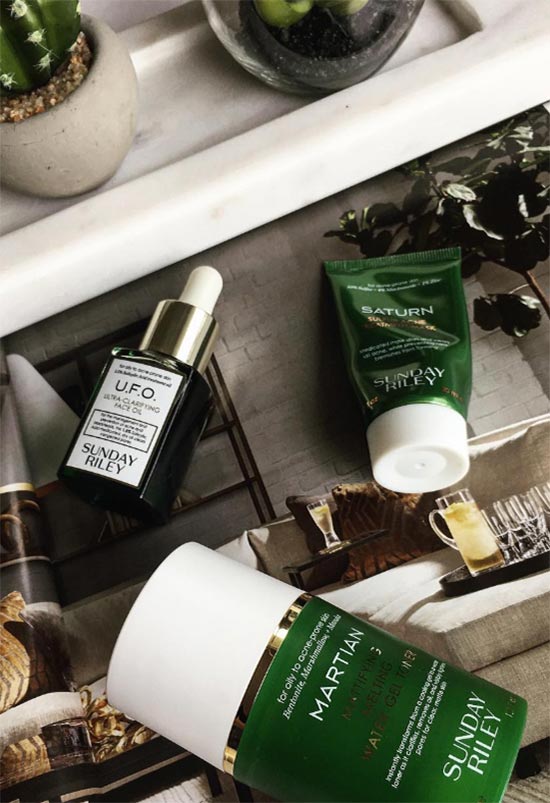
How to Use Sulfur in Skin Care to Treat Acne
Here is how you should add sulfur to your skincare routine based on the type of product you choose:
Using Sulfur Masks
Sulfur masks are one of the most popular ways of using sulfur for acne treatment. Sulfur masks are great because they can be used as often as necessary based on your skin condition, and they can include other ingredients to treat the skin like various clays for oiliness or zinc for sensitivity.
Sulfur masks are best used around 3 times a week, although if you are suffering from a particularly nasty breakout, you can even try using them every day until it clears. Using sulfur masks correctly is important to get the full benefits of sulfur without any of the drawbacks.
- First, begin by cleansing your skin with a gentle, low-pH cleanser that will remove all impurities from your skin without drying it out. You might want to do a double cleanse, especially if you’ve been wearing a full face of makeup. Massage your skin with the cleanser in upward circular motions, and then rinse it away with water or use damp facial sponges or a facial cloth to really ensure everything is gone.
- Next apply your sulfur mask. Dispense about a nickel or dime-sized amount, since you do not need a lot to fully cover the face. You can use your fingers, and gently massage it into the skin in upward motions. You don’t need to rub it in or use any pressure – just apply an even yet thin layer to your skin. If you don’t want to get your hands dirty, use a mask brush to apply the sulfur mask instead.
- Let the sulfur mask sit on your skin for 10-15 minutes. Any longer and you risk irritating your skin.
- Once it’s time, go ahead and remove the sulfur mask! The easiest way to do it, especially if the mask also contains clay, is to hop in the shower and let the steam from the water break down the mask and then let the stream from the shower head rinse it away. If a shower is not an option, you can simply rinse your face at the tap, and then make sure all traces of it are gone with the help of some facial sponges, a face cloth, or damp cotton pads.
- (Optional) Sulfur masks often leave the skin feeling a little tight and dry, so now is the perfect time to use a skin-soothing and hydrating mask to replenish the skin. Much like with the sulfur mask, apply a generous amount of a nourishing mask to your skin, allow it to sit for 10-20 minutes, and then rinse it away.
- Since sulfur products often have a slightly higher pH than is ideal for the skin, it is very important to use a cotton pad to wipe on a pH-adjusting toner like Paula’s Choice Resist Advanced Replenishing Toner from Nordstrom.
- Now you can finish off your skincare routine with the normal products you would use to nourish and moisturize your skin. Since sulfur masks can be somewhat drying to the skin, we recommend using at least a hydrating essence or serum, followed up by a moisturizer. Make sure to use a product with at least a 30 SPF in the daytime.
- Sulfur masks can also double as spot treatments, so read the next section to see how you should use them in that way!

Using Sulfur Acne Spot Treatments
Another really popular way of using sulfur for acne is as a spot treatment. Spot treatments are applied only to the area of the skin affected by acne, and they can be a great choice for people whose skin is too sensitive to tolerate a sulfur product all over the face.
Spot treatments with sulfur usually have a pink or white color, so they are best used in the evening when you won’t be walking out and about. Additionally, many sulfur masks can actually double as spot treatments, so you can use your sulfur mask exactly as I outline here!
- Much in the same way as I outlined previously, you want to start off with clean skin. Avoid harsh cleansers and opt for something gentle with a low pH. Massage the cleanser into your skin, rinse it away, and then make sure it’s all gone (along with the gunk) by wiping your face with a damp facial cloth or face sponge.
- If you are a fan of toners, wipe your face with a cotton pad saturated with your toner of choice. Avoid using an exfoliating glycolic or lactic acid-infused toner on the same day that you will be using a sulfate spot treatment, as too much exfoliation can irritate the skin.
- Moisturize your skin with a lighter product that doesn’t contain too many occlusive oils, silicones, or waxes. Moisturizing with a hydrating essence, serum or gel will work better than a heavy cream. The reason you want to avoid heavy cream moisturizers is that the ingredients in the spot treatment will not penetrate into your skin past the heavy creams.
- For spot treating the odd pimple, saturate a cotton bud with the sulfur spot treatment or mask of your choice. Tap the cotton bud against the inflamed skin, making sure to cover the whole pimple in a thin layer.
- For spot treating larger areas, apply the sulfur spot treatment or sulfur mask with your finger to the affected area in a thin layer. Make sure your hands are clean, first!
- Be careful not to touch your skin while the sulfur product is still moist. Once it dries down, you can go to bed or continue with your evening without worrying about it rubbing off onto anything!

Using Other Sulfur Products
While sulfur usually shows up in masks and spot treatments, sometimes suflur products also come in the form of cleansers, toners, serums or moisturizers. In those circumstances you want to use the product as directed on the packaging.
It is possible to overdo sulfur in your skincare routine, so make sure that your routine only includes one product that contains sulfur at all times.
Photos via @skin.minimalist, Instagram

